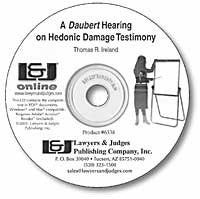
Alternative Dispute Resolution
- Author: Susan B. Meek, M.D., J.D.
- ISBN 10: 0-913875-30-9
-
ISBN 13: 978-0-913875-30-8
- Copyright Date Ed: September 15, 1996
-
Pages: 373
-
Binding Information: Softcover
- Size: 6 ✕ 9 Inches (US)
Alternative dispute resolution is a process which is being increasingly used by the court system. This comprehensive reference will assist you in understanding and participating in the process. It will help you analyze all of the processes involved, including mediation, negotiation and arbitration. It will also provide you checklists, questions and role-playing exercises to provide a more complete understanding of the processes. It also includes sample forms.
This book is also available as a Kindle E-book. Click here to purchase and download:
Topics covered:
- The growing field of alternative dispute resolution
- Negotiation,
- Areas of negotiation,
- Introduction to mediation,
- Steps to successful mediation,
- Areas of mediation,
- Ethics of mediation,
- Mediation court cases,
- Arbitration,
- Arbitration court cases.
Table of Contents
Chapter 1. The Growing Field of Alternative Dispute Resolution
Reasons for Alternative Dispute Resolution
Characteristics of Each Process
Notes and Questions
Goals and Objectives of Alternative Dispute Resolution
Attorney Duty to Advise Client about Alternative Dispute Resolution
Alternative Dispute Resolution versus Litigation
The Alternative Dispute Resolution Act
Qualified Immunity to Impartial Third Parties
Qualifications
Duties of the Impartial Third Party
Compensation
Appeal
Choice of Processes
Changes in the Legal Process
Attorneys Can Create a Win-Win Situation
Power and Control Are Transferred
Questions
Attorney Education
Objective Standards
Other Legislation
Federal Rules of Evidence
Questions
Analyses
Forms
Questions
Chapter 2. Negotiation
Negotiation Overview
Questions
Issues to Consider Prior to Negotiation
Role of Communication
Verbal and Nonverbal Communication Send a Message
Types of Authority
Opening the Negotiation
Party Perception: Positive or Negative Atmosphere
Offers and Counteroffers
Use Objective Data for Best Results
Information Exchange
Listening, Messages, Perceptions
BATNA (Best Alternative to Negotiated Agreement)
Lack of Reality, Conflict
Strategy
Brainstorming and Creating Options
Effects and Power of Persuasion
Presentation and Sequence of Position or Argument
Basic Motivation Appeals
Objective Data and Evidence
Future Relationships
Party Perception
Never Assume
Allow Opponents to Save Face
Dealing With Pressure
Integration and Planning of Overall Objectives to Achieve Resolution
Role of Threats
Making and Meeting Offers
Implementation
Questioning Skills
Avoidance Techniques
Listening Skills
Compromise
Alternative Solutions
Negotiation Tactics
The Negotiation Environment
Critical Decisions
Attorney Skills and Competency
Attorneys Should Avoid Making Decisions for Clients
Analyze Similar Cases
Power Is Heightened by Creating Alternatives
Factors Important to Consider
Preparation for Negotiation
Satisfaction
Assessment of Position
Checklist
Factors Involved in Negotiation
Assessment of Case Value
Keys to a Successful Negotiation
Ethics of Misrepresentation in Negotiation
Negotiation Theories
Actions to Recognize
Three Ways Negotiators Deal with Stonewalling, Attacks and Tricks
Styles of Negotiation
Effective Legal Negotiator Traits
Other Factors
Theories of Negotiation
Stages of Legal Negotiation
Legal Negotiation Checklist
Questions
Agreement Validity
Engaging in Risk Taking
Client or Attorney, Who Should Negotiate?
Integrative and Distributive Bargaining
Conflicting Needs
Choosing a Strategy and Negotiating Style
Maximize Gains
Closure
Enforcement or Recission of Settlement Agreement
Chapter 3. Areas of Negotiation
Insurance
Criminal
Plea Bargaining Negotiation
Business Organization
Business Negotiation Checklist
Preparation and Planning
Partnership
Corporation
Commercial Transactions
Checklist for Commercial Transactions
Important U.C.C. Sections to Consider
Civil Litigation Checklist
Examine
Family Law
Family Transactions
Checklist of Necessary Parties
Medical Malpractice
Employment
Employment and Labor Checklist
Wills and Trusts
Wills and Trusts Checklist
Questions
Chapter 4. Introduction to Mediation
Benefits of Mediation
Mediation Based on Principles
Mediation Emphasizes
Basic Mediation Model Includes
Preliminary Matters
Determine
Mediation Questionnaire
Rules For Mediation
Criticisms of Mediation
Legislation
Chapter 5. Steps to Successful Mediation
Choosing a Mediator
Attorney as Advocate
Role of the Attorney
Differing Roles the Attorney May Take in Mediation
Other Representatives or Parties
Use of Document, Witnesses and Experts
Communication Skills
Solutions for a Mutually Agreeable Settlement
Case Considerations
Theories
Power Imbalances
The Introductory Stage
The Mediators Statement Specifically
Questions Enhance Understanding
Statement of the Problem (Second Opening Statement)
Effective Use of the Opening
The Questioning Process
The Caucus Process
Issue Identification
Reframing and Restating
Problem Identification
Agenda Setting
Problem Solving
Lateral Thinking
Alternatives
Impasse
The Agreement
Closure and Follow-up
Enforcement
Community Based Mediation
Questions
Chapter 6. Areas of Mediation
Family Law
Employment and Labor Disputes
Personal Injury
Environmental
Commercial Transactions
Medical Malpractice
Chapter 7. Ethics of Mediation
Codes of Ethics and Standards of Conduct for Mediators
Ethical Considerations with Conflict of Interest
State and Federal Law
Mediator Liability
Chapter 8. Mediation Court Cases
Chapter 9. Arbitration
Introduction
The Choice of Arbitration
Courts Attitude
Statutes
The Use of Arbitration Clauses
Need for Arbitration
Loss of the Right to Arbitrate
Recent Cases
State versus Federal Law
Valid or Binding Agreements
Adhesion Contracts and Unconscionability
General Responsibilities of the Arbitrator to Administrative Agencies
Objections to Arbitration
Questions
Chapter 10. Arbitration Court Cases
References
About the Author
Index




